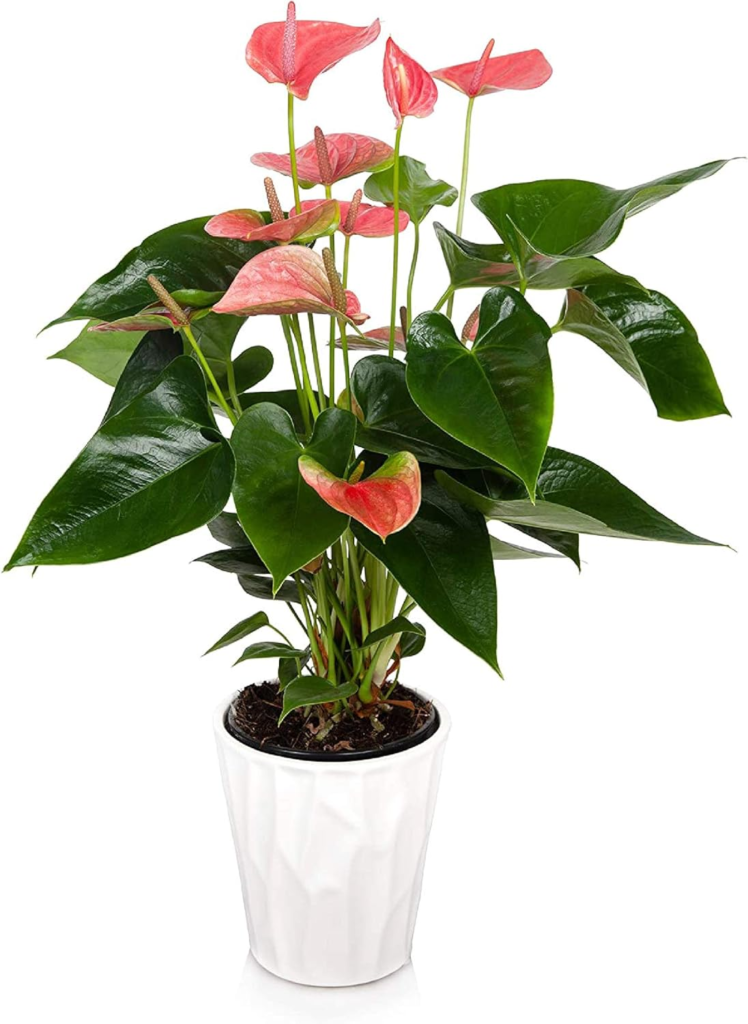Indoor plants do more than just add a touch of green to your home—they can also help clean the air you breathe.
Many common houseplants are known for their ability to filter out harmful toxins, improving air quality and making your home a healthier place to live.

Whether you’re looking to reduce the presence of chemicals like formaldehyde, benzene, or carbon monoxide, or simply want to enjoy fresher air, the right plants can make a big difference.
In this blog, we’ll introduce you to 13 of the best indoor plants for purifying your home’s air. These plants are not only effective at removing pollutants, but they’re also easy to care for, making them perfect for any home.
From hardy options like the Snake Plant and Aloe Vera to beautiful bloomers like the Peace Lily and Gerbera Daisy, there’s a plant on this list for every space and style. Whether you’re a seasoned plant lover or just starting out, adding these air-purifying plants to your home can help create a cleaner, fresher environment for you and your family.
Table of Contents
Let’s Get Started:
1. Flamingo Lily:
The red anthurium, also called the flamingo lily because of its bright, showy flowers, is an evergreen plant. According to NASA’s Clean Air Study, this plant can help clean indoor air by removing harmful chemicals like ammonia, toluene, xylene, and formaldehyde.
To keep your anthurium healthy, place it in bright but indirect light and make sure it gets enough humidity. Mist the leaves regularly and keep the soil moist, but not too wet.
2. Fittonia ‘Frankie’ (Fittonia Argyroneura)

Fittonias, often called nerve plants, are easy-to-care-for houseplants that help clean indoor air by removing chemicals like toluene, benzene, and trichloroethylene.
The ‘Frankie’ variety features pink and green leaves, while other types may have white and green or green and red foliage.
These plants grow 3 to 6 inches tall, making them ideal for terrariums and small dish gardens. To keep fittonias healthy, provide them with high humidity, moist but well-drained soil, and bright, indirect light.
3. Broad Lady Palm:
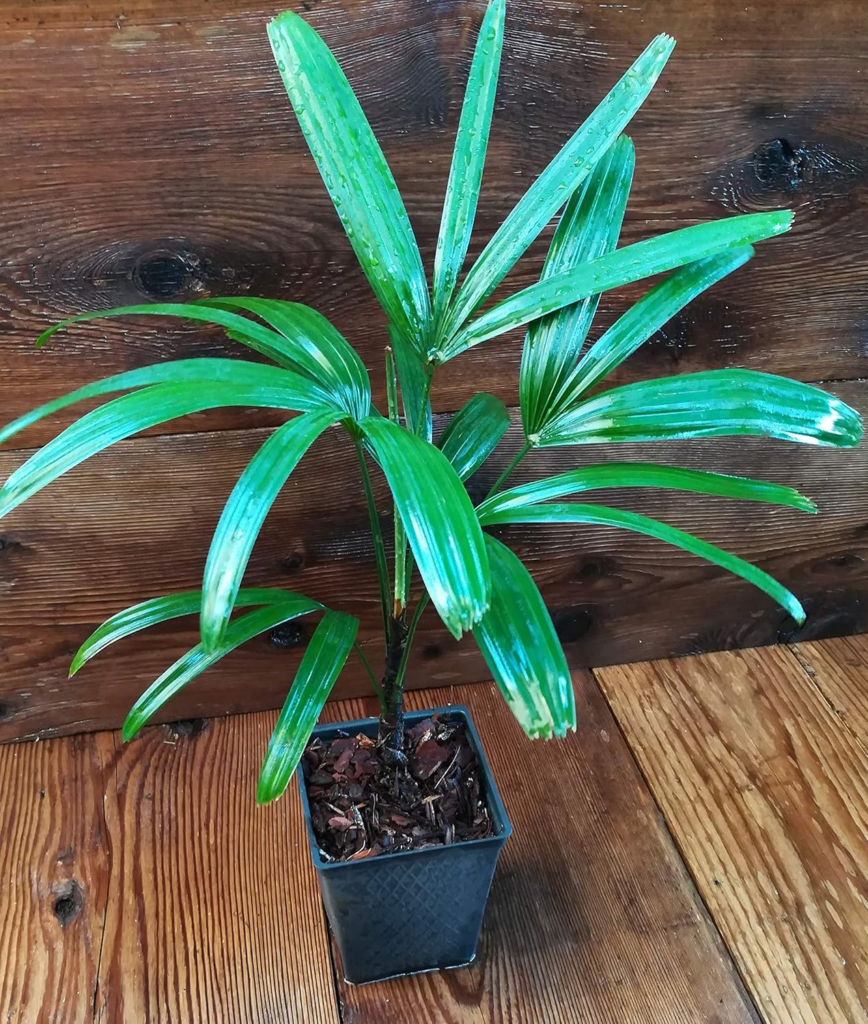
Lady Palm & The NASA Clean Air Study: A project led by NASA researched ways to clean the air in space stations.
Its results suggested that, in addition to absorbing carbon dioxide and releasing oxygen through photosynthesis, certain indoor plants may also provide a natural way of removing pollutants (benzene, formaldehyde, and trichloroethylene, xylene & toluene, and ammonia were tested).
The Lady Palm was shown to top the list being effective at removing all types of pollutants studied.
This awesome, cold-tolerant, slow-growing “ Air Cleaner “ palm is ideal for shady locations indoors or out and lends a rich tropical look to your landscape or home.
4. Aloe barbadensis Miller (Aloe Vera):
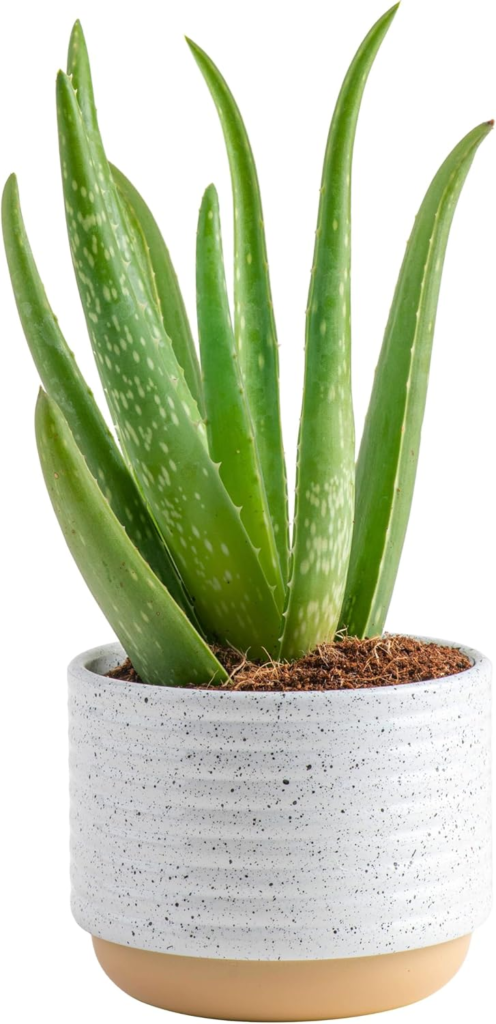
Aloes are simple-to-care-for succulents that help clean the air by removing benzene and formaldehyde, which can be released by paints, cleaners, and other chemical products.
To keep your aloe healthy, place it in a sunny spot and grow it in cactus potting mix or regular potting soil with added perlite or sand for better drainage.
If you break or cut a piece of aloe, you can use the gel inside to treat minor burns.
5. Parlor Palm (Chamaedorea elegans):
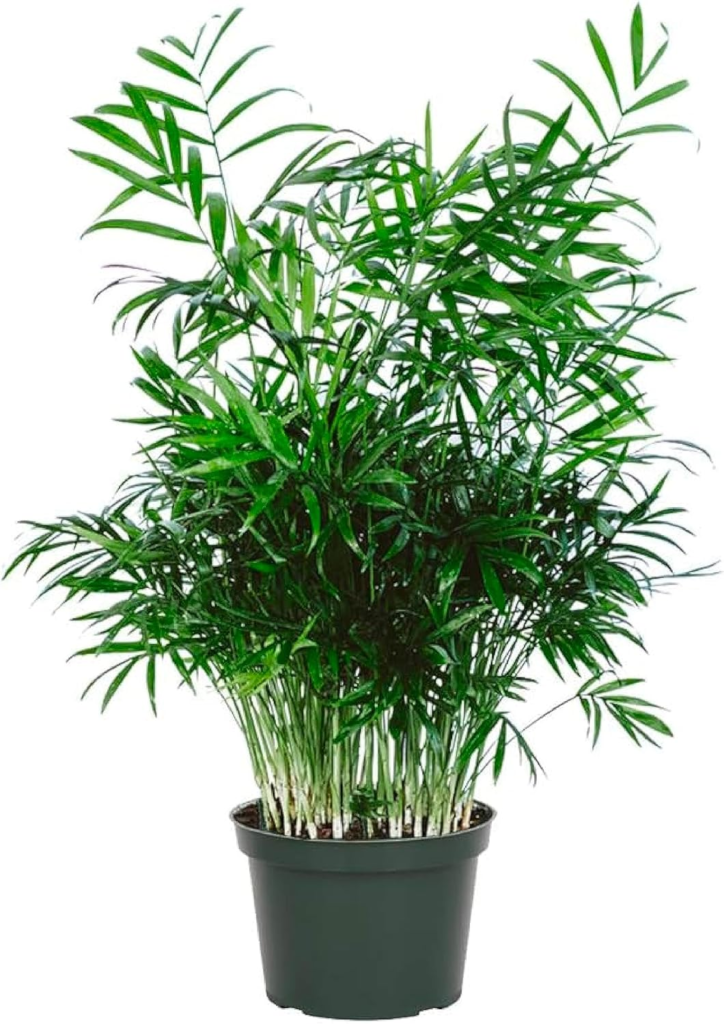
The Parlor Palm, native to rainforests from southeastern Mexico to northern Guatemala, is a compact plant with elegant, arching green leaves. Each leaf has over 12 pairs of narrow leaflets.
Indoors, these palms, also called Neanthe Bella Palm or Chamaedorea Elegans, may produce small yellow flowers in spring if they receive enough light. They are suited for outdoor planting in USDA hardiness zones 10–12.
These palms are easy to care for, thrive in medium to bright, indirect light, and prefer temperatures between 65–80°F. They also purify the air, boost your mood, and are safe for both people and pets.
6. Philodendron:
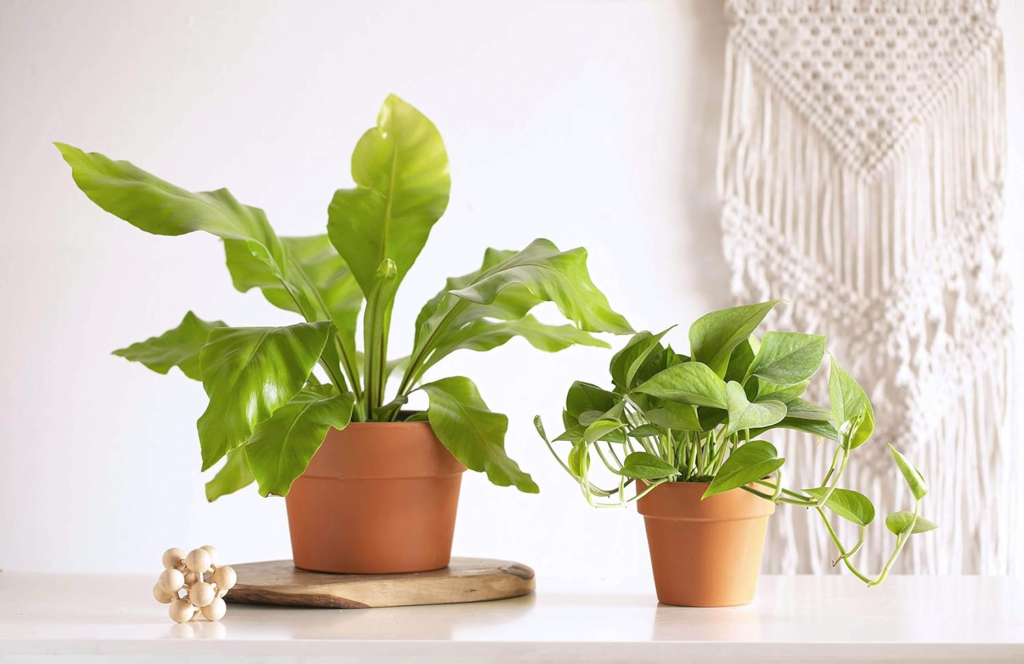
Philodendrons come in many sizes, colors, and leaf shapes, making them a versatile choice for any home. The variety ‘Xanadu,’ for example, is easy to care for and thrives in medium to bright, indirect light.
These plants are also known for their ability to remove indoor toxins like formaldehyde, which can be found in carpets and cleaning products.
7. Pothos (Epipremnum aureum):
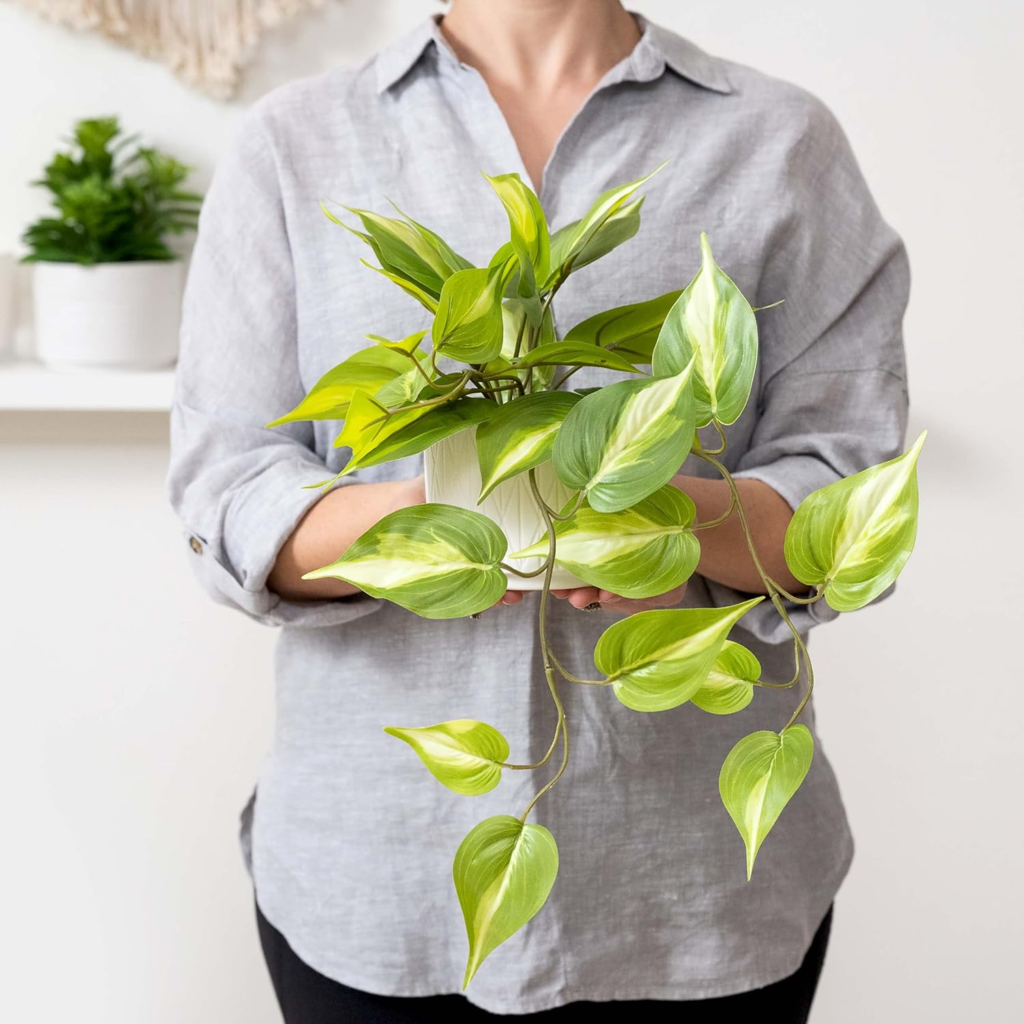
Pothos received high praise in a NASA clean air study for its ability to remove harmful chemicals like benzene, formaldehyde, toluene, carbon monoxide, and xylene from the air.
These vining tropical plants can tolerate low light, though their leaves may turn solid green in such conditions. Pothos are great in hanging baskets or containers, where their vines can elegantly trail over the edge of a table.
8. Rubber Tree (Ficus elastic)
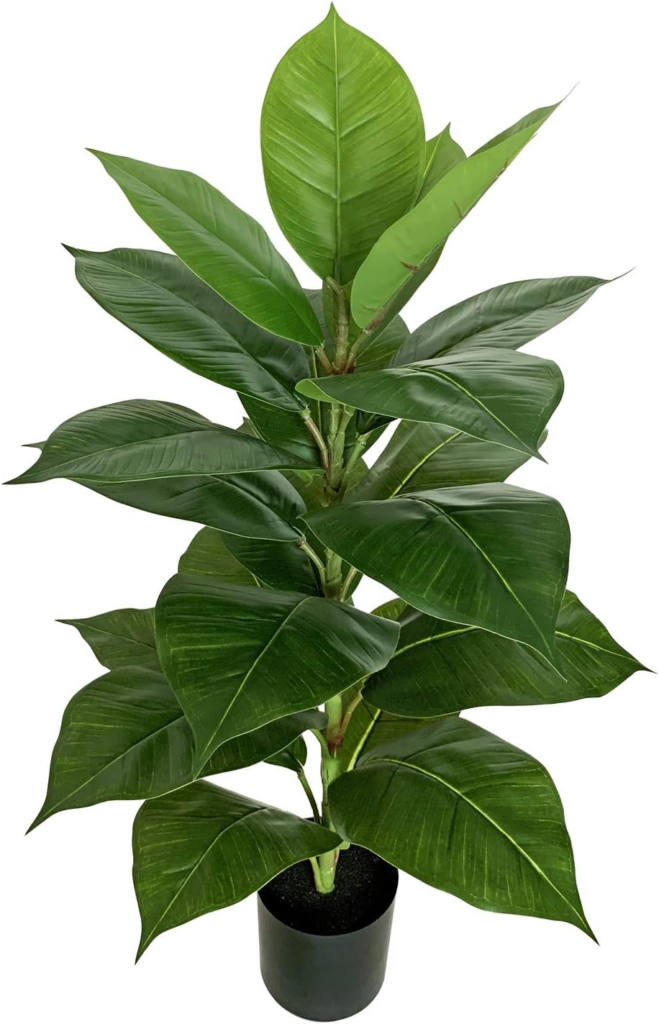
Rubber trees are effective at absorbing and breaking down harmful chemicals in the air. Their large, glossy leaves also help convert the carbon dioxide we exhale into oxygen. To keep your rubber tree healthy, plant it in well-drained potting soil, water it regularly, and apply liquid fertilizer during its growing season.
9. Spider Plant (Chlorophytum Comosum ‘Vittatum’):

This low-maintenance houseplant does well in bright, indirect light and effectively removes pollutants like formaldehyde and benzene from the air.
Spider plants don’t like soggy soil, so make sure to let the soil dry out a bit between waterings. Besides purifying the air, this plant helps boost mood levels.
10. Peace Lily (Spathiphyllum ‘Mauna Loa’):

Peace lilies are great at removing toxic gases like formaldehyde and carbon monoxide from the air. They are easy to care for and will droop to let you know when they need water.
However, they can be mildly toxic to pets and humans, so it’s a good idea to wash your hands after handling the plant.
11. Mother-in-Law’s Tongue (Sansevieria trifasciata ‘Laurentii’):

The Snake Plant, also known as Mother-in-law’s Tongue, is an extremely hardy houseplant that’s tough to kill, making it perfect for beginners.
This plant, valued in China for its association with the Eight Gods’ virtues, can thrive in dim light and needs watering only when the soil is dry.
While it’s adaptable to various temperatures and light conditions, be cautious not to overwater it or neglect it entirely.
12. Chinese Evergreen (Aglaonema modestum):
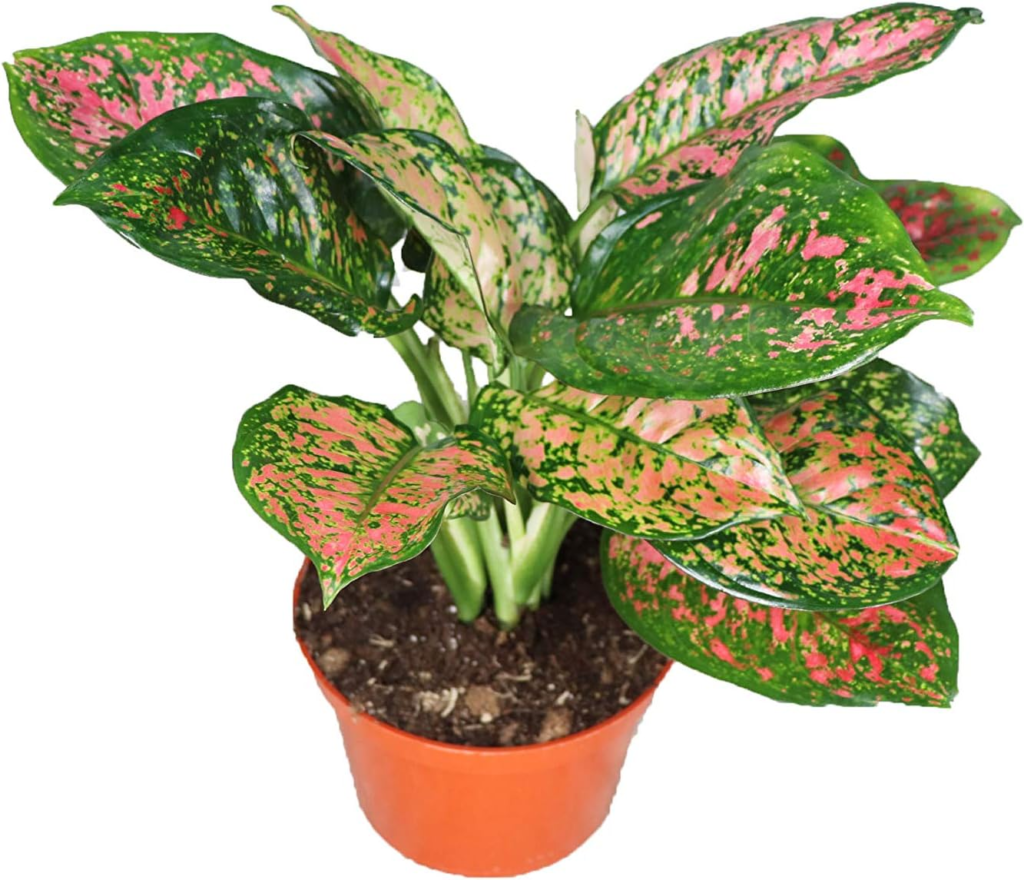
The Chinese Evergreen is a low-maintenance plant that grows well in low to medium light, typically reaching 1 to 2 feet in height. It helps improve air quality indoors, but be aware that it contains substances that can be irritating and potentially toxic to pets.
13. Bamboo Palm (Chamaedorea seifrizii):
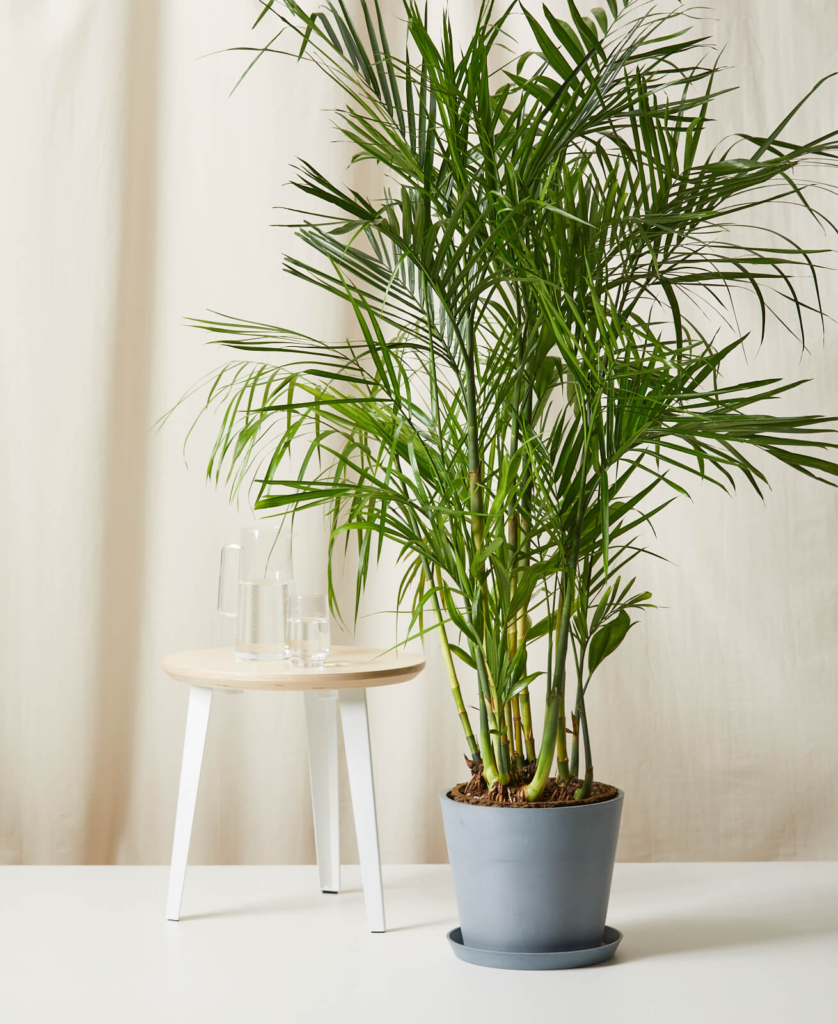
The Bamboo Palm is a tropical indoor plant that adds a touch of elegance to any space. Unlike real bamboo, it’s low maintenance and easy to care for.
Native to the shaded forests of Mexico and Central America, it adapts well to lower light conditions. This makes it a great choice for both home and office environments.
Plus, it ranks high on NASA’s list of air-purifying plants, making it an excellent choice for improving indoor air quality.
Incorporating indoor plants into your space not only enhances its aesthetic appeal but also contributes to a healthier living environment. Plants like the Bamboo Palm, with their adaptability and air-purifying qualities, make excellent additions to both homes and offices.
As we’ve seen, each plant on our list brings its unique benefits, from removing harmful toxins to boosting mood and adding a touch of nature indoors.
Whether you’re looking for a hardy companion like the Snake Plant or a lush, air-cleaning Bamboo Palm, there’s a plant suited to your needs and space.
So, bring home one of these green friends and enjoy the dual benefits of a more beautiful and cleaner living environment. Happy planting!
Thanks For Visiting.

